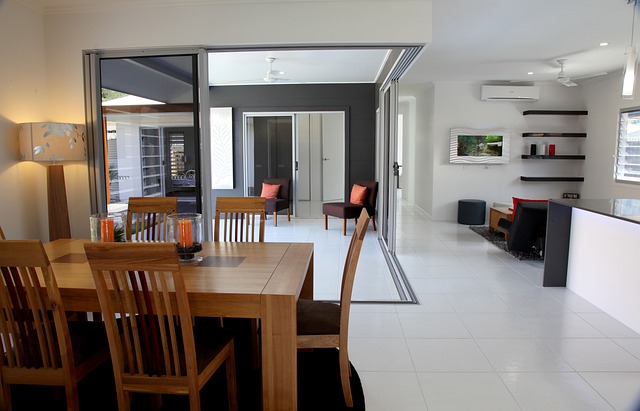
A lot has happened in 2020, and one of the consequences of these many happenings is that working from home has become the norm. Whether or not it will remain the norm remains to be seen, but one thing is certain – some of the energy costs that were placed on business owners are now being placed on their employees.
Whether it’s because of new electronics in your home office or needing to keep the heat up during the day, many homeowners are seeing an increase in their energy bills. This brief guide to energy efficiency in the home will help you save money and protect the environment.
First, We Fix
Before we delve into all of the novel technologies you can use to improve your home’s efficiency, it’s helpful to look at the basics. Homes with cracked foundations, malfunctioning furnaces, and bad plumbing are leaking energy and money.
Get your home tuned up. Have a contractor swing by and check your roof and foundation for problems. Have a plumber help you find and repair a water leak. Get an HVAC technician in to do a tune-up on your furnace and air conditioning. Once any problems with these fundamental systems have been repaired, you can move on to home improvement.
Adjust Your Living Habits
There are a number of very slight adjustments you can make to the way you live, that when added up, can lead to some pretty substantial savings on your energy bill each year. While these adjustments don’t make your physical home more energy-efficient, they do make your household more energy-efficient (and we think that counts, too).
Kill Vampires
Vampire power (sometimes known by its much less entertaining name, standby power) is everywhere. It refers to electronic appliances using electricity when they’re in standby (not actively being used). Your TV uses standby power to know when the remote is turning it on. Your microwave uses standby power to display the time. Vampire power slowly drains the electricity from your home, and is usually unnoticed.
The solution? Unplug your appliances. Alternatively, you can connect electronics you commonly use together (like in your home office) to a power bar, then simply switch the power bar off when you’re done with them. You can also set timers on certain power bars so that they’ll turn off automatically.
The Heat Goes On
Heating, be it your whole home or a kettle full of water, is one of the biggest power costs a household will face (in warmer areas, cooling may replace heating as the biggest cost). There are a bunch of simple changes you can make:
- Only fill a kettle with as much water as you need – the more water your element has to heat, the more energy you waste
- Reduce how long you shower for and how hot your showers are – even a minute less of showering each day can lead to savings
- Reduce (or increase) the temperature in your home by a degree or two – adjust by wearing climate-appropriate clothing (t-shirts in the summer, slippers, and sweaters in the winter). The right temperature for sleeping will be different from when you’re active, so adjust appropriately.
Insulate
Insulation is one of the best ways to make your home more energy-efficient – it keeps you cool in the summer and warm in the winter. There’s even a whole discipline of home building, called Passive House, that functions on the principle that if a home is well-insulated enough, it hardly needs to be heated or cooled with HVAC.
Everything in your home’s building envelope – the walls, doors, windows, roof, and the foundation – can be made to better insulate your home. Have a contractor come in to do an energy audit; find out where your home is leaking (or taking on) heat, and insulate accordingly.

Invest in Energy-Efficient Technology
There are all kinds of different green and energy-efficient electronics and appliances – something for any price range. On the low-end, you have the aforementioned timed power bars to reduce vampire power. In the middle, you can invest in smart technologies.
Smart light bulbs and thermostats can help you track and control your energy usage. You can set the temperature to change automatically, and you can calculate how much energy you’re saving by changing the temperature by a degree or two. Smart light bulbs, too, can be shut off automatically, or even dimmed at various times of day.
On the high-end, invest in energy-efficient appliances. Dishwashers and laundry machines are a great place to start, but if you want to save a lot of cash, look at high-efficiency furnaces and air conditioners, as well.
Finally, you can really go wild and invest in technologies like solar panels, microhydropower, or small-scale wind power. Generating your own electricity through sustainable means is one of the best ways to be energy-efficient.
Remember, you don’t need to follow all of these steps – we’ve provided options for people of all incomes to make their homes more energy-efficient. There are also several government programs that offer things like low-flow showerheads for free (or at a steep discount). Take a look at what your government has to offer (privately-run utilities sometimes have programs like this, too).
You can easily make your home more energy-efficient – you’ve already taken the first step by reading this article.
P.S: Did you enjoy reading this article? We’d love your feedback and comments on it. Want to learn more? Please Join our EAT FREE Community, for Live Webinars and more online learning opportunities FREE!
Related Articles and Resources:
- Top 11 Energy Saving Ideas for the Winter that Work
- How to Improve the Energy Efficiency of your Property
- 5 Things Businesses Can Do to Reduce Energy Usage Today



